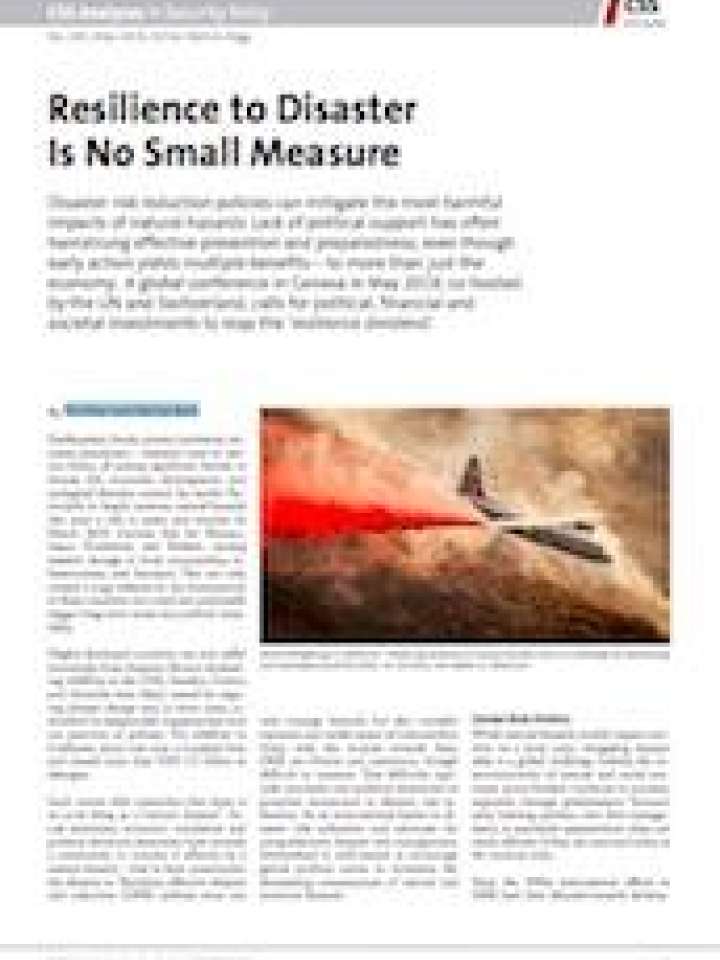Resilience to disaster is no small measure
CSS Analyses in Security Policy CSS, no. 245
Earthquakes, floods, storms, heatwaves, tsunamis, pandemics – disasters come in various forms, all posing significant threats to human life, economic development, and ecological diversity around the world. Particularly in fragile contexts, natural hazards also pose a risk to peace and security. Disaster events such as Cyclone Idai and wildfires in the USA, Greece, and Sweden offer reminders that there is no such thing as a “natural disaster.” Social structures, economic conditions and political decisions determine how severely a natural hazard affects a community or country – that is, how catastrophic the disaster is.
This paper calls for effective DRR policies to not only manage hazards, but also to consider exposure and tackle issues of vulnerability. Done well, the societal rewards from DRR are diverse and numerous, though difficult to measure. That difficulty typically translates into political disinterest in proactive investment in DRR. Prominent issues in measuring resilience are the availability and comparability of data, level of analysis, and the limits of the underlying theoretical models of disaster resilience. Nevertheless, Switzerland has emerged as an international leader in DRR and has helped promote the 'resilience dividend,' which affirms that building resilience contributes positively to the achievement of sustainability and development goals.
Explore further
